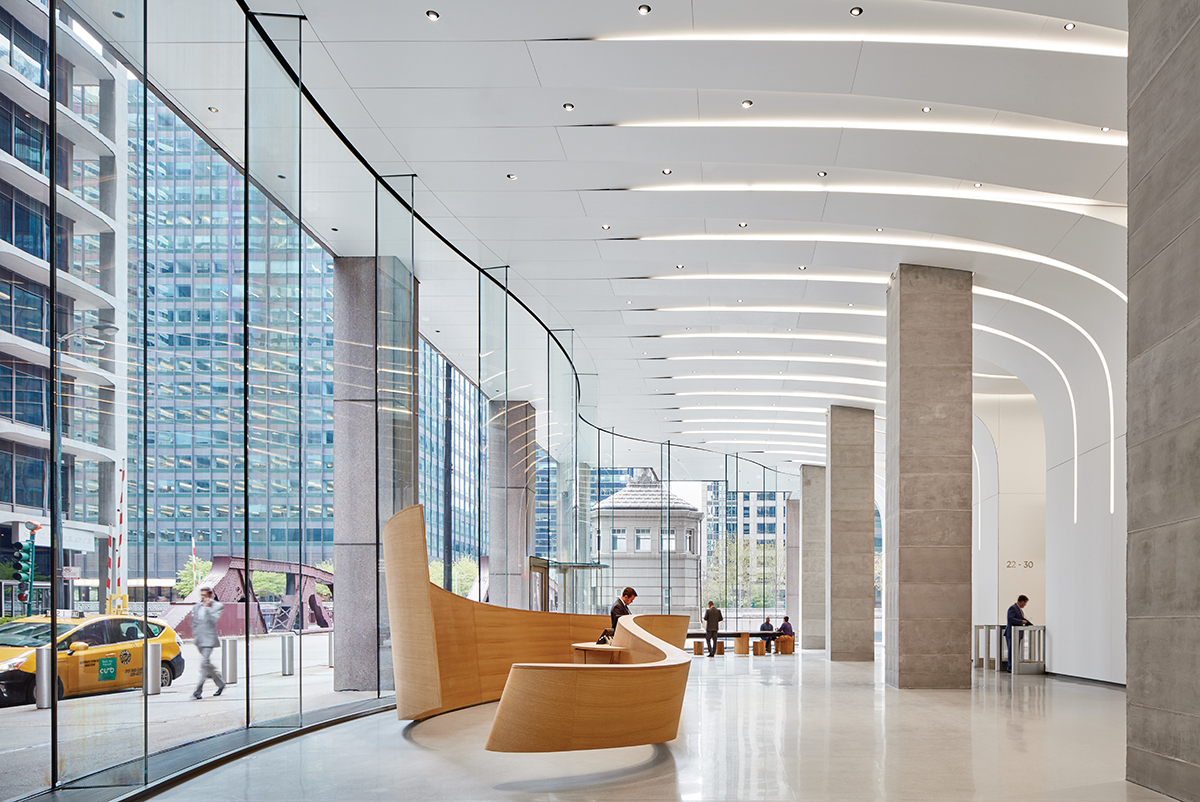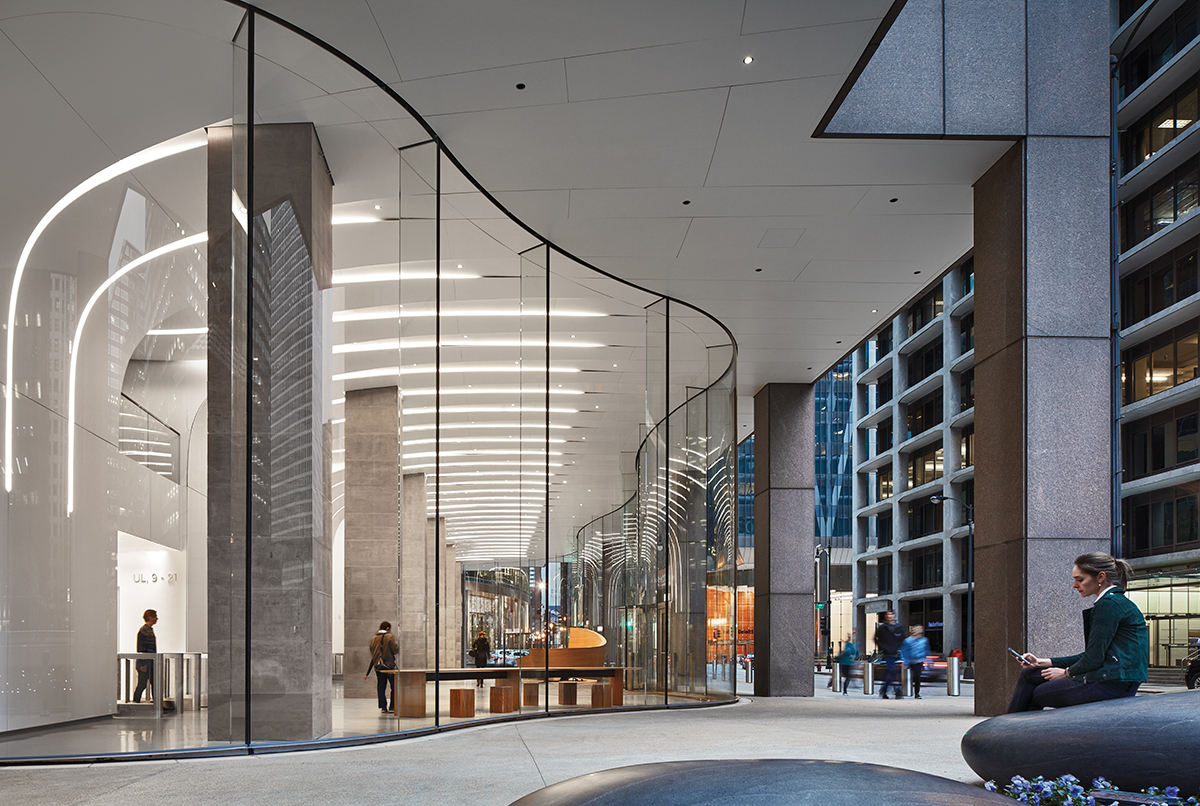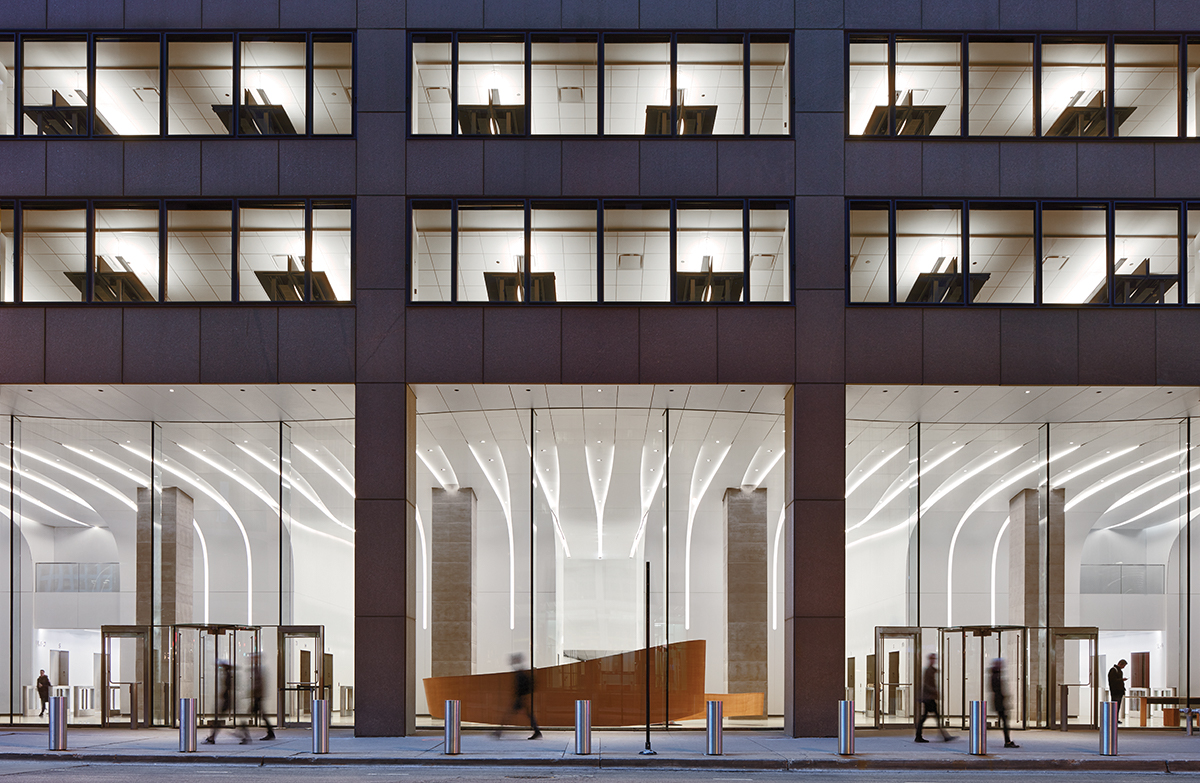By Kenneth Griffin, BEMP, MBS, senior building analyst, ESD, now Stantec, and Sabhya Katia, project manager at Passive Logic — Whether it is hybrid or full time, employees are returning to the office, and business owners are looking for ways to make that return more enticing. In addition to improving facilities to be safer, healthier, and more ecologically friendly with programs like LEED, WELL, and WELL Health-Safety Rating certifications, building owners and operators are also taking the opportunity to make their facilities more aesthetically pleasing.

One popular renovation project is updating lobbies of existing structures to bring in more natural light with the addition or replacement of windows. This one step can help modernize a building’s appearance and in general make the office environment more appealing. New windows can also increase energy efficiency and enhance the safety and comfort of the space for occupants and visitors.
Before launching into this type of major repositioning project, however, owners and developers should consider a hidden complication that, left unchecked, can turn into a major health and safety concern. What is this lurking danger? Condensation. Let me explain.
I recently worked with a team charged with determining the impact replacing and expanding windows in the lobby of a major downtown building would have on the structure. Our client had the foresight to consider this possible complication.
Changing the window material and the amount of surface that allows light to enter the lobby would undoubtedly have an impact on the interior environment. The building owner in this case was concerned about the possibility of creating a situation where window condensation would become an issue. They were correct to be concerned.
It’s not the heat, it’s the humidity
The client in question was considering modifying the typical envelope module at a premiere downtown Chicago location. A building envelope includes the walls, roof, foundation, and windows of any building or facility and plays a major role in determining levels of natural lighting, ventilation, and energy requirements for heating and cooling.

Unlike other building processes, building envelope performance is highly correlated with the building’s type and climate where it is located. Chicago has many lovely qualities. Consistent weather is not one of them, especially when it comes to the temperature extremes found in both winter and summer months. When you have a pane of glass where one side is hot and humid and the other is cold, there is a chance window condensation will result. But the conditions must be just right.
This project explored the impact of replacing the existing lower insulated spandrel panel with a double-glazed insulated unit. Also known as infill panels or insulated aluminum composite panels, owners were concerned that replacing existing spandrel panels with a double-glazed insulated unit would change existing conditions just enough to lead to a risk of condensation.
What’s the big deal about condensation?
When your bathroom mirror fogs up after a steamy shower, the impact is likely inconsequential. When water repeatedly condenses on the windows of a large building a series of complications and risks could result.
Window condensation in large building lobbies can be a sign of poor insulation or excessive moisture in the air. This can lead to the growth of mold, which can cause respiratory problems and other health issues for those who are exposed to it. Excess moisture on windows can create other physical safety hazards, including the potential for slips and falls on wet floors. Excess moisture in the air can also damage the building’s structure and weaken its foundation over time.
In addition to structural, safety, and health concerns, window condensation in large office structures can also be a problem from an aesthetic standpoint. Excess moisture on windows can obscure the view and make the lobby of a building look uninviting. It can also lead to the formation of unsightly streaks and water stains on the windows, which can be difficult to remove and can detract from the overall appearance of the building. If the goal is to welcome employees back to the office, it would be nice to see them coming!
What if I can’t see them coming?
Building owners, operators, and developers already experiencing condensation issues are advised not to ignore the situation. While the problem may not turn out to be dire, building stakeholders should still ask these important questions:
- How often does the condensation occur, and is it a persistent problem?
- Is the condensation occurring on the interior or exterior of the windows?
- Is the condensation causing damage to the windows or the surrounding building materials?
- Are there any health concerns associated with the condensation, such as the growth of mold or other harmful substances?
- Are there any building codes or regulations that need to be followed to address the issue of window condensation?
- How much will it cost to address the issue of window condensation, and is it worth the investment in the long term?
The answers can help determine what level of mitigation to correct the problem is necessary. A qualified consultant can help find those answers.
What if I want to see returning workers even better?
If you are considering office renovations that include replacing windows, you need to be aware of how those structural changes will impact other building systems. In the Chicago project referenced in this article, the building owner recognized the potential problem before it became one. This was only possible because they engaged certified professionals trained to make the determination.

Without diving too far into the technical methodology utilized in this study, suffice it to say two conditions specific to Chicago’s location were examined. In the first scenario, the outdoor air temperature was simulated to be 0°F, approximating the ASHRAE 99.6% annual design heating design condition. In the second scenario, the outdoor air temperature was simulated to be -7°F to account for Chicago Code heating design condition. Specialized software was used to model the risk of condensation using external wall thermal resistance values and boundary conditions.
Next, we reviewed the available heating and cooling capacity in the existing overhead heating, ventilation, and air conditioning (HVAC) system to assess the impact of the proposed envelope modification.
What did we discover?
In the first scenario (0°F), we concluded a minimal risk of condensation at the base of the proposed lower double-glazed insulated panel. In the second scenario (-7°F), the model indicated a low to moderate risk of condensation forming at the lowest 1” of the unit’s frame under specific conditions (e.g., gyms or conference spaces where elevated levels of occupancy may raise the local space relative humidity above 30% RH.)
Our conclusion was the risk for typical office space is similarly minimal to Scenario #1. Given the limited extent of circumstances for “low to moderate risk” (limited conditions and operating hours), further discussion with the window wall vendor was recommended.
We also recommended an IECC 2021/ASHRAE 90.1-2019 Energy Code Impact Analysis be performed. If the additional proposed glazing increases the total building’s window-to-wall ratio above 40% additional energy mitigation measures and/or offsets may be required for the revised envelope to be code compliant.
Finally, our study included an analysis of the impact on available heating and cooling capacity. If the project is to proceed, we recommend that a comprehensive building load analysis be performed to confirm the base building systems can accommodate the additional heating and cooling loads.
To renovate or not to renovate?
Building owners, operators, and developers have great reasons to act now if they are considering any updates to their current office environments. The opportunity to make workspaces safer, healthier, more comfortable, and inviting to returning employees appears to be ideally timed, especially when combined with a renewed focus on greater energy efficiency and carbon-neutral goals. Improvements can be made to address existing problems or to meet new aesthetic or sustainability goals. Either way, building stakeholders are advised to find out what they don’t know.
About the authors
Kenneth Griffin, BEMP, MBS |senior building analyst | ESD now Stantec
Kenneth Griffin’s energy analyses and studies have been used to inform the design of new high performance buildings in Asia, the Middle East, and North America. He is a certified BEMP (Building Energy Modeling Professional) and has a published thesis that focuses on thermal mass, natural ventilation, and energy modeling.
The Stantec team unites approximately 28,000 professionals working in over 400 locations across six continents. The company delivers projects that advance the quality of life in communities around the globe. Its collaborations across disciplines and industries bring buildings, energy and resource, environmental, and infrastructure projects to life.
Sabhya Katia, project manager at Passive Logic
Sabhya has expertise in energy modeling with a focus on façade, lighting, and HVAC analysis. He strives to increase collaboration between all stakeholders of design and construction to reduce costs, increase efficiency, and build a sustainable future. He is passionate about reducing existing buildings’ carbon footprint using digital twins and big data.




